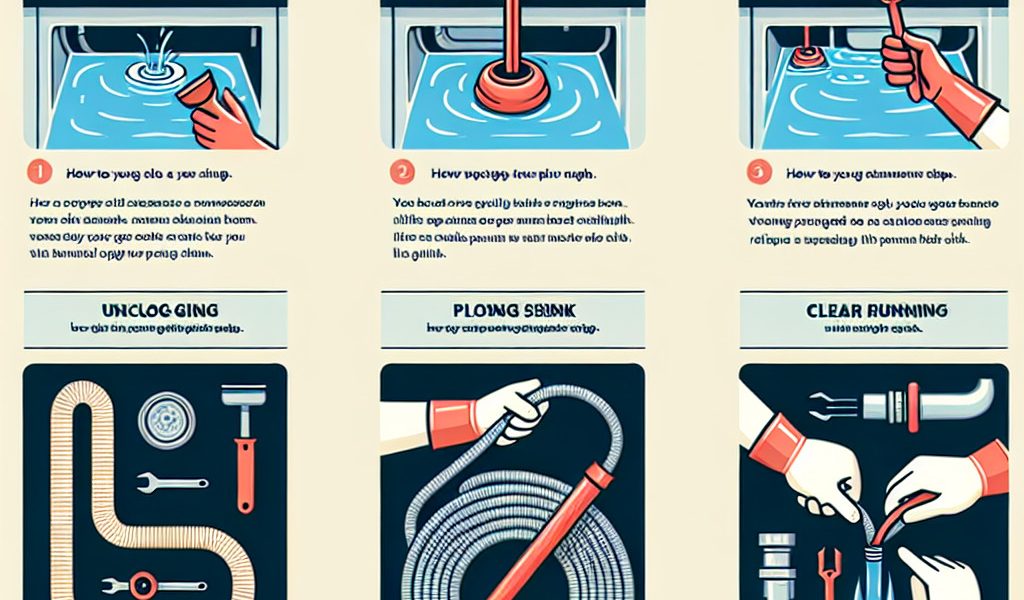Green and Mean: Chemical-Free Strategies in Safely Unclogging Your Sink
A clogged sink is a common problem in homes, causing inconvenience and unpleasant odors. Fortunately, there are several effective methods for unclogging a sink without resorting to chemicals that are harmful to the environment and health. In this article, we present different techniques suitable for different levels of clogging, ranging from simple solutions to more advanced methods.
1. Use boiling water
For light blockages or prevention, pouring boiling water down the sink may be enough to dissolve fatty residue and other accumulated waste. Here’s how to do it:
- Boil a large pot of water.
- Remove the stopper or filter from your sink if there is one.
- Slowly pour the boiling water down the drain while being careful of splashing.
- Leave it on for a few minutes then run cold water to rinse.
2. Use a suction cup
The suction cup is an essential tool for quickly and easily unclogging your sink:
- Plug the overflow with a damp cloth to prevent pressure from escaping.
- Place the suction cup over the sink drain and make sure it completely covers the hole.
- Pump vigorously several times to create pressure that will dislodge the clog.
- Repeat as necessary until the water drains normally.
3. Disassemble the siphon
If the previous methods did not work, the clog may be located in the drain. Here’s how to do it:
- Place a bucket or basin under the siphon to catch any water that may come out.
- Loosen the siphon mounting nuts by hand or with an adjustable wrench if necessary.
- Carefully remove the siphon and clean it using a brush and warm, soapy water.
- Then reassemble everything, tightening the nuts well to avoid water leaks when putting your sink back into service.
4. Make a Homemade Solution with Common Ingredients
To naturally dissolve organic residue, you can use a mixture of baking soda, salt and white vinegar:
- Empty as much standing water as possible into your sink before you begin.
- Sprinkle 1/2 cup of baking soda down the drain.
- Then add 1/4 cup of salt and leave for a few minutes.
- Pour in 1 cup of white vinegar and wait about 15 minutes for the chemical reaction to occur.
- Rinse with a pan of boiling water to remove dissolved residue.
5. Use a manual ferret
The ferret is a flexible metal tool equipped with a brush or a tip designed to unclog pipes:
- Insert the end of the ferret into the pipe until you reach the blockage.
- Turn the ferret handle while applying light pressure to dislodge the clog and scrape the pipe walls.
- Collect any debris that rises to the surface then rinse with plenty of hot water before reinstalling the siphon if necessary.
6. Apply a pressure washer (if available)
This method should be used as a last resort if none of the previous solutions have worked:
- Equip yourself with a high pressure cleaner suitable for plumbing work, as well as a specialized kit for unblocking pipes (usually supplied).
- Insert the unblocking tip into the pipe and activate the pressure washer to remove the blockage using the force of the water.
- This method can be very effective, but requires some know-how and careful handling of the material.
Preventative advice to avoid future traffic jams
To prevent clogged sink problems, here are some simple tips to follow:
- Do not throw fats or oils down your sink. These substances solidify as they cool and can cause blockages.
- Regularly use a plunger or pour boiling water down your drains to dissolve residue before it builds up.
- Collect solid waste with a strainer or filter placed on the sink drain to prevent it from accumulating in the pipes.
